
Spring flowers of 2003 near Gorman. |
Part 3. Southern California
East from the Sierra, Great Basin desert
enters California in Mono Lake area. It's the world of sagebrush flats, dry mountains,
and abandoned mining towns.
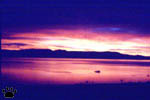
Sunset, Mono Lake |
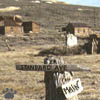
Bodie ghost town,
Mono Lake area. |
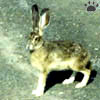
Black-tailed jackrabbit,
Mono Lake |

Sunrise, Mono Lake. |
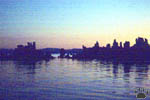
Black Smoker-like formations
around geothermal vents, Mono Lake |
Mono Lake itself is a huge volcanic caldera, surrounded by
cinder cones, lava flows, and weird rock formations. In summer and fall, its saline
waters turn into a crustacean soup, attracting hundreds of thousands of gulls,
grebes, and phalaropes. |

World's oldest trees - pines
Pinus longaeva, Inyo Nat. Forest |

Dry bottom of Death
Valley. |

Sagebrush, Death Valley. |

Sand Dunes, Death Valley. |
From Telescope Peak, you can see Mount Whitney and Death Valley, the lowest point
of the continent, at the same time.
|
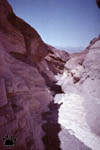
Mosaic Canyon, Death
Valley. |
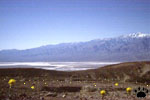
Spring flowers in Death Valley. |
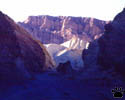
Titus Canyon,
Death Valley. |
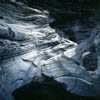
Mozaic Canyon,
Death Valley. |
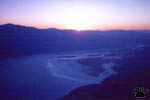
Death Valley from Dante's View. |
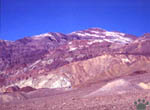
View of the eastern escarpment
from the bottom of Death Valley. |
Death Valley is the largest National
park in California. Its centerpiece is a deep rift valley, the world of dry desert
lakes and spectacular canyons. In addition to being a geologist's paradise, it
contains some unique flora and fauna, even endemic
fishes in tiny salt springs. |

Artist's Palette,
Death Valley. |
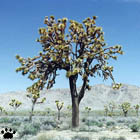 |
 |
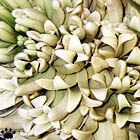 |
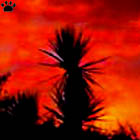 |
| Joshua tree(Yucca
brevifolia), World's largest yucca, forms large forests in desert mountains
of Southern California. |

Hooded oriole
(Icterus cucullatus),
Colorado Desert. |
Southern California is mostly occupied
by Mojave desert. It is famous for rare, but spectacular
wildflower displays, and for weird forests of
cacti and yuccas in desert mountains. Fall colors
are also beautiful here, but nobody pays any attention to them. Mountain ranges
to the southwest, from Los Angeles area to the Mexican border, are famous for
fantastic views and highly diverse flora. Southwestern corner of California also
has more species of bats and reptiles than other parts of the state. |
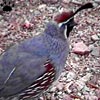
Gambell's quail
(Callipepla gambelii),
Mojave Desert. |
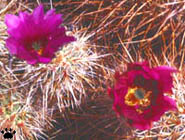 |
 |
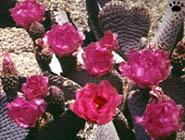 |
| Common cacti of Southern
California, left to right: claret cup cactus (Echinocereus triglochidiatus),
devil cholla (Opuntia parishii), beavertail cactus (O. basilaris).
Guadalupe Canyon. |

Fall colors in Sierra foothills
near Lone Pine. |
What makes the desert mountains of
Southern California so interesting is the unusual habitat diversity. Each slope
is influenced by elevation, sun, winter rain, and coastal fog in its own way.
As a result, San Bernandino National Forest near Los Angeles has more species
of flowering plants than any other forest in the United States. |
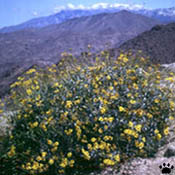
California brittlebrush (Encelia
californica), San Bernardino Mts. |
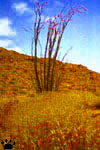
Ocotillo (Foucuieria
splendens),Anza-Borrego |
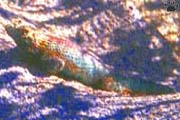
Granite spiny lizard (Scleroporus orcutti),
male in breeding colors,
Santa Rosa Plateau Ecological Preserve. |
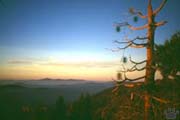
Coulter's pine (Pinus coulteri) has the
heaviest cones of all conifers in the World.
Mount Palomar State Park. |

Chaparral yucca (Y.
whippleyi), Mojave. |

Spring flowers of 2003 near Gorman. |
Part 4: The Central Valley.
Back to Part 2
Home
|